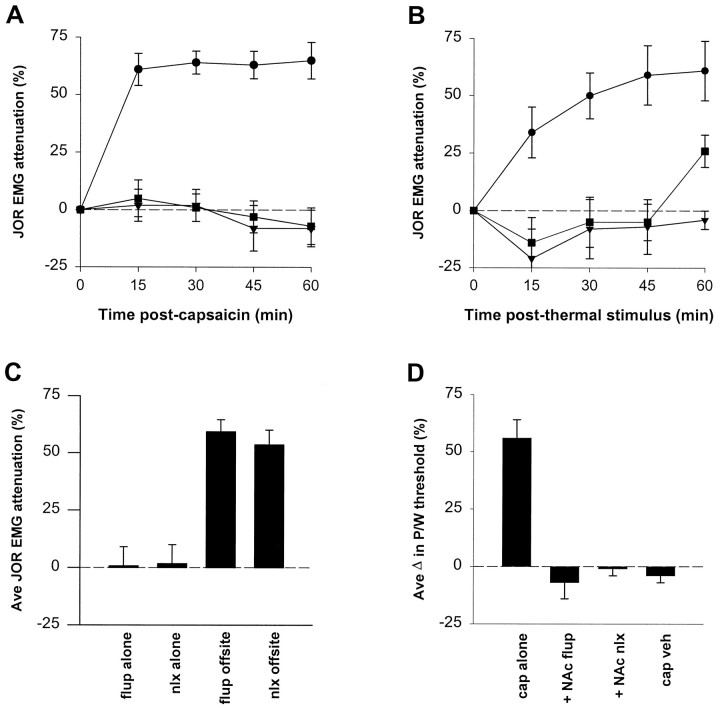Fig. 3.
The effect a dopamine or opioid antagonist on noxious stimulus-induced antinociception. All pretreatments were given 15 min before the onset of noxious stimulation. A, Naloxone methiodide (opioid antagonist, ▾) (n = 5) or flupentixol (dopamine antagonist, ▪) (n = 6) was injected into nucleus accumbens before injection of capsaicin (250 μg) in the hindpaw. The effect of capsaicin injection without pretreatment (same dose, ●) is replotted from Figure2A. B, Naloxone methiodide (▾) (n = 6) or flupentixol (▪) (n= 5) was injected into nucleus accumbens before thermal stimulation (both hindpaws immersed in water, 50°C, 4 min). The effect of thermal stimulation without pretreatment (same stimulus intensity, ●) is replotted from Figure 2C. C, The effect of either flupentixol (flup alone) (n = 6) or naloxone methiodide (nlx alone) (n = 6) injected into nucleus accumbens as a single agent; the effect on capsaicin-induced antinociception of previous injection of either flupentixol (flup offsite) (n = 6) or naloxone methiodide (nlx offsite) (n= 6) administered to sites adjacent to nucleus accumbens.D, The effect of capsaicin administered to the forepaw on hindpaw-withdrawal threshold in awake animals when administered either alone (cap alone) (n = 6) or in the presence of previous administration of flupentixol (+ NAc flup) (n = 5) or naloxone methiodide (+NAc nlx) (n = 5). Capsaicin vehicle with no supraspinal treatment was also administered (cap veh) (n = 4). Antinociception is indicated by increased threshold for withdrawal.

